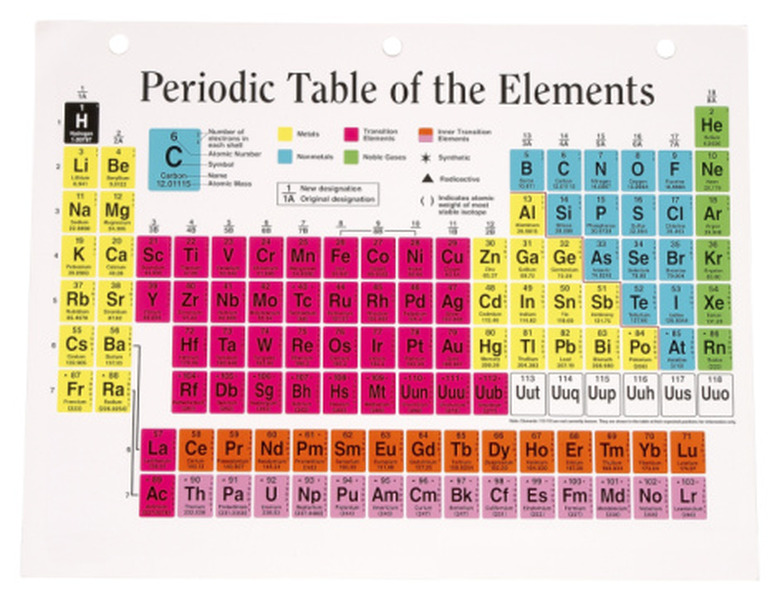How To Use Avogadro's Number To Find Mass
Avogadro's Number is approximately equal to 6.022 x 10^23. This quantity is the basis for another unit of measure commonly used in chemistry called the mole. One mole is a quantity equal to Avogadro's Number. When scientists, therefore, use Avogadro's Number, they are usually measuring molar quantities. One of these molar quantities is the molar mass, which is equal to the number of grams per mole of that substance. An element's molar mass is conveniently equal to its atomic mass number, which you can find on the periodic table. If you know an element's atomic mass number and the mass of your sample, you can find the mass of any element in the sample by using the mole.
Step 1
Find the total mass of the substance by measuring it on a mass balance. Do not forget to subtract the mass of your measuring container when you do this.
For example, if a sample of water weighs 13 grams in its beaker and the beaker has a mass of 3 grams, the water has a mass of 10 grams.
Step 2
Determine the substance's chemical formula. Water, for instance, has a formula of H2O.
Step 3
Find the atomic mass number of each element in the compound. This information is on the periodic table, usually as a decimal number above or below the chemical symbol. The atomic mass number is also equal to the mass in grams of one mole of that element. This is called its molar mass. For example, the atomic mass number of hydrogen is 1.0079 and that of oxygen is 15.999. These numbers are also equal to each element's molar mass.
Step 4
Add the molar masses of each element in the compound to find the total molar mass of the substance. For instance, 1.0079 + 1.0079 + 15.999 = 18.0148. Each mole of water has a mass of 18.0148 grams.
Step 5
Divide the mass of the compound by its molar mass to determine the number of moles in your sample. For example, 10 grams of water divided by 18.0148 grams per mole equals 0.5551 moles of water.
Step 6
Examine your chemical formula to determine the ratio between the moles of the compound and the moles of each element. For example, water has two atoms of hydrogen and one atom of oxygen in each molecule. Therefore, in each mole of water there are two moles of hydrogen and one of oxygen.
Step 7
Multiply the number of moles of your compound by each compound-to-element ratio. To find the number of moles of hydrogen, for instance, multiply 0.5551 moles of water by 2 moles of hydrogen per mole of water. 0.551 * 2 = 1.102, therefore there are 1.102 moles of hydrogen present in your sample. Using the same method, you can determine that there are 0.5551 moles of oxygen also present.
Step 8
Multiply the number of moles of each element by that element's molar mass. This gives you the total mass of each element in your sample. For example, 1.102 * 1.0079 = 1.111 grams of hydrogen. Likewise, 0.5551 * 15.999 = 8.881 grams of oxygen.
Things Needed
- Mass balance
- Periodic table of the elements
Cite This Article
MLA
Arnold, Kylene. "How To Use Avogadro's Number To Find Mass" sciencing.com, https://www.sciencing.com/use-avogadros-number-mass-8375416/. 24 April 2017.
APA
Arnold, Kylene. (2017, April 24). How To Use Avogadro's Number To Find Mass. sciencing.com. Retrieved from https://www.sciencing.com/use-avogadros-number-mass-8375416/
Chicago
Arnold, Kylene. How To Use Avogadro's Number To Find Mass last modified March 24, 2022. https://www.sciencing.com/use-avogadros-number-mass-8375416/
